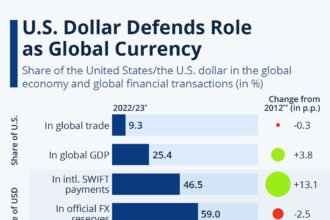Every day, billions of dollars move across blockchains through stablecoins. The market is dominated by USDT ($175B market cap) and USDC ($75B), but a growing ecosystem of new entrants is expanding the landscape. Stablecoins are no longer a crypto sideshow — they’re becoming one of the largest financial innovations since the rise of electronic payments.
Their use cases are broad, but four stand out:
-
Hedging in high-inflation economies
-
Cross-border payments and remittances
-
DeFi and programmable finance
-
Trading and liquidity
Of these, the cross-border and remittance use case has the biggest growth potential. USD-denominated stablecoins are quietly replacing SWIFT for small and mid-sized flows — allowing money to move across the world in seconds, not days.
What’s being disrupted is not SWIFT in general, but SWIFT as the global rail for dollar transfers. For decades, the U.S. dollar has been the unit of account for global commerce, and SWIFT has been the messaging system coordinating those flows. Now, instead of SWIFT as the intermediary, USD stablecoins themselves serve as the transmission rail: programmable, verifiable and available 24/7.
Stablecoins aren’t yet replacing SWIFT at scale — they still account for less than 1% of global money flows — but in remittances, B2B payments and e-commerce, USD stablecoins are already becoming the faster, cheaper complement to the dollar’s traditional wiring system.
While USD stablecoins move instantly in the digital world, the real economy still runs on local fiat. That forces liquidity providers to bridge two different states of money:
Today, this mismatch creates friction. Liquidity providers end up holding pesos, reals or naira overnight, unable to recycle capital until banks reopen. The fintech or end-user benefits from instant settlement — but the provider absorbs the cost of locked balances. In effect, stablecoin adoption is capped by the size of provider balance sheets.
FX-on-chain protocols collapse the two-state problem into a single state: digital. Instead of moving between stablecoins and fiat through banks, FX-on-chain enables direct swaps between USD stablecoins and local-currency stablecoins.
This unlocks two key advantages:
-
Instant conversion: USDC/USDT holders can sell directly into MXN-stables, BRL-stables, or COP-stables, which can then be redeemed for fiat instantly.
-
Flow matching: Global remittance flows (selling USD to buy local) naturally meet corporate or institutional flows (selling local to buy USD). On-chain pools match these in real time, netting out exposures and recycling liquidity 24/7.




















